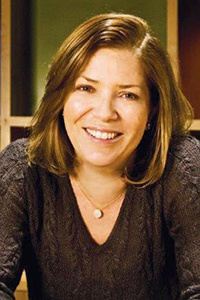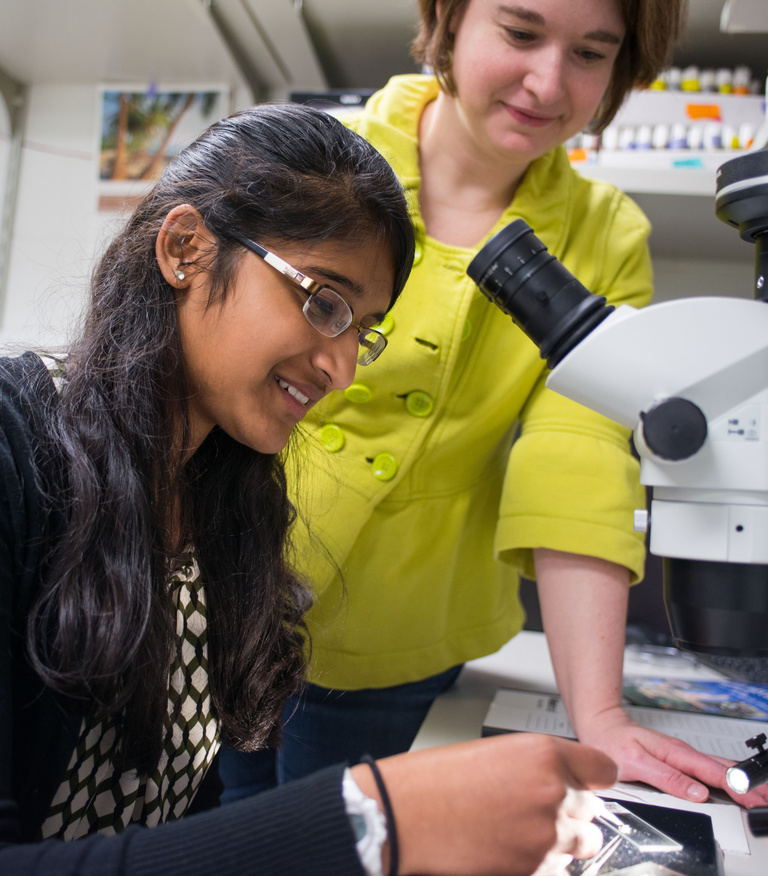The University of Iowa has established an early entrance academy for high-ability 10th-graders, making it among the first of such academies at a public research university in the nation.

The Martin and Melva Bucksbaum Early Entrance Academy for Science, Technology, Engineering, Arts, and Math is made possible through a $10 million gift from Mary Bucksbaum Scanlan and Patrick Scanlan and is being named in memory of Mary’s parents.
These high-ability students will enroll at the UI in fall of 2016 as Honors at Iowa–qualified first-year students. The majority of students will enter the academy at age 16 in fall 2016 after completing the equivalent of their sophomore year in high school.
The UI hopes to admit 12 to 20 students from across the state and nation for this first cohort of academy students. This will also be the first such residential academy for high-ability high school students in the state of Iowa.
“We are grateful for this generous gift from the Bucksbaum family that is making this educational opportunity possible to highly talented young students who are our future leaders, artists, creators, and scientists,” says Susan Assouline. “These are tremendously caring and visionary people who want to make a difference in the lives of students.”
Assouline is the director of the Connie Belin and Jacqueline N. Blank International Center for Gifted Education and Talent Development in the UI College of Education. The Martin and Melva Bucksbaum Early Entrance Academy for Science, Technology, Arts, Engineering, and Math is one of the Belin-Blank Center’s capstone programs.
“The Belin-Blank Center is named for two families who have been generous with their resources and support of students who are talented in many domains,” Bucksbaum Scanlan says. “It is very special to be able to honor my parents, who also were dear friends of David and Connie Belin and Myron and Jacqueline Blank. Endowing this academy assures a bright future for talented students through the center’s transformative work with talented and gifted students.”
One of the key strengths of the academy, Assouline adds, is that the students will be part of a cohort and will have peers who will be going through the same experience and transitions.
“We are excited that we have developed a new academy that will enroll high-ability students who have completed 10th grade,” Assouline says. “The gift for the new academy will allow us to expand our current programming and strengthen our support, scholarships, and services for our students.”
Bucksbaum Academy Scholarships are available to students once they are admitted to the academy. The award is based on merit (test scores and GPA) and demonstrated financial need.
The UI has a long history of recruiting high-ability students from across the state, nation, and world, according to Assouline.

The academy is expanding the following three highly successful Belin-Blank Center programs:
- The National Academy of Arts, Sciences, and Engineering (NAASE), an early-entrance-to-university program for high school juniors that has been operational since 1999, will be subsumed by the Bucksbaum Academy.
- The Secondary Student Training Program (SSTP), which offers high school students summer intensive laboratory experiences with university researchers, allows them to earn 3 semester hours of college credit, and has been administered by the Belin-Blank Center since 2011—although it’s been on the UI campus for many years—will be a primary option for SSTP students.
- The Scholastic Art and Writing Program, which has been administered by the Belin-Blank Center since 2008, will expose thousands of talented artists and writers to this opportunity.
NAASE has served nearly 200 high-ability students over the past 16 years.
Assouline says that nationally, there is a patchwork-quilt approach to academically accelerating students—the advancement of gifted students in subjects at a rate that places them ahead of where they would be in the regular school curriculum.
“In 27 states, there are 30 different programs or models that serve high-ability high school students through specialized programming like the Bucksbaum Academy or specialized high schools on college campuses,” Assouline says. “Early admission is not for every student, but for the right student who is ready for this experience, it is tremendously beneficial in keeping them engaged and challenged in the learning process.”
Only 15 states explicitly allow acceleration, Assouline says. In Iowa, state policy allows local educational agencies (school boards) to decide acceleration policy. This national map shows each state’s acceleration policies.
Assouline adds that another goal of the academy is to have the current UI Belin-Blank Center early entrance program continue to incorporate not just science, technology, engineering, and technology but the arts and humanities as well.
The Belin-Blank Center’s mission is to empower and serve the international gifted community through exemplary leadership in programs, research, and advocacy.
The UI acknowledges the UI Foundation as the preferred channel for private contributions that benefit all areas of the university.